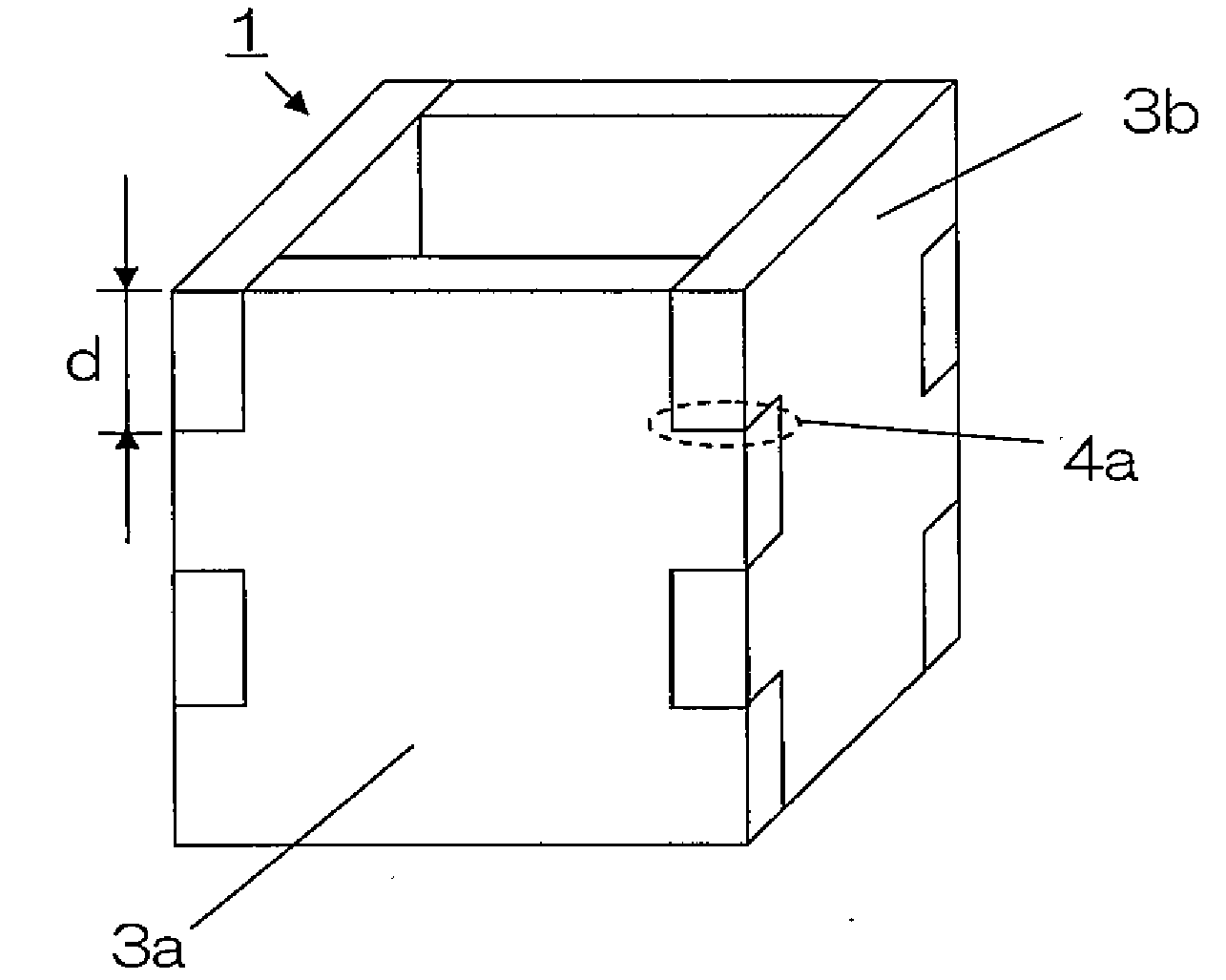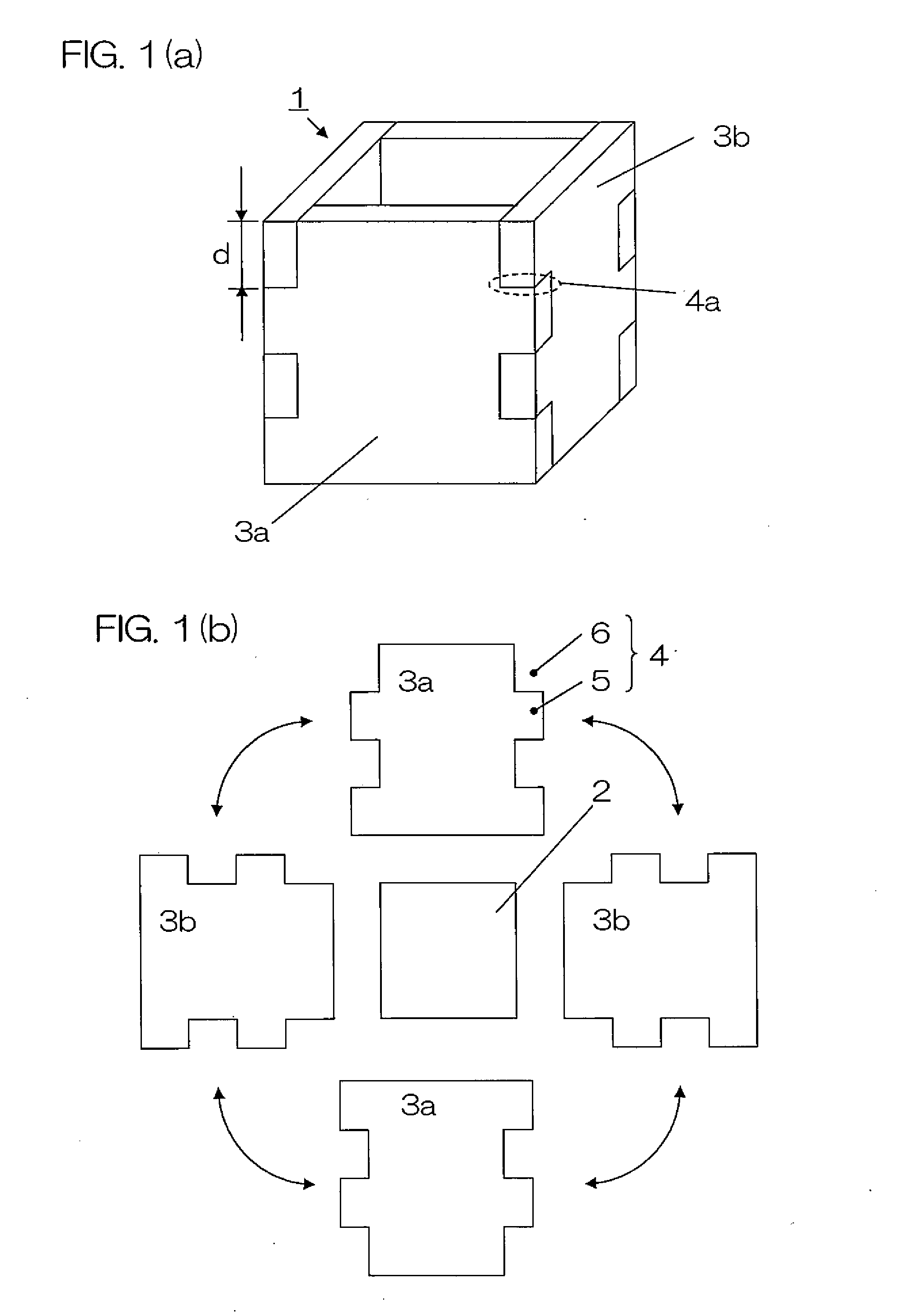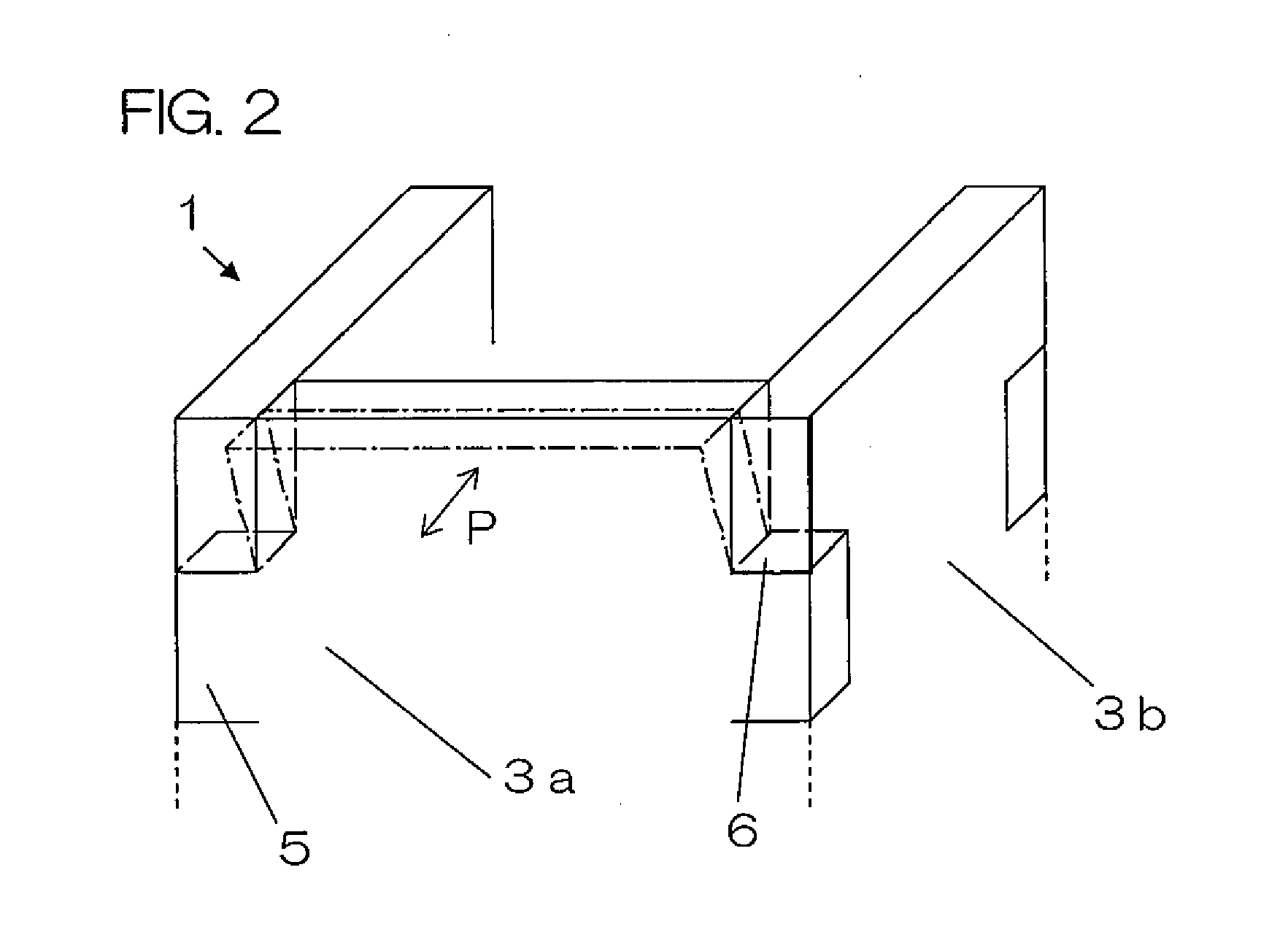Mold, Method of Forming the Same, and Method of Producing Polycrystalline Silicon Substrate Using the Mold
- Summary
- Abstract
- Description
- Claims
- Application Information
AI Technical Summary
Benefits of technology
Problems solved by technology
Method used
Image
Examples
example 1
[0171]The mold in the conventional example shown in FIG. 17 and the mold having the configuration according to the present invention shown in FIG. 7 were compared with each other.
[0172]In the conventional example, one bottom surface member (20 mm in thickness) composed of graphite having a mold release material composed of silicon nitride applied thereto of 2 mm in thickness and four lateral surface members (20 mm in thickness) were assembled in a box shape, and were fixed using 32 assembling screws (φ5 mm by 40 mm in length), to obtain a mold (220 mm by 220 mm in inside dimensions by 250 mm in height).
[0173]Twenty-two kg of a silicon melt was poured into the obtained mold, the top of the mold was heated to 1460° C. in an argon (Ar) atmosphere whose pressure was reduced to 100 Torr, the temperature of the mold was gradually lowered from the bottom of the mold to solidify the silicon melt in one direction, to obtain a silicon ingot having a height of approximately 200 mm.
[0174]In the...
example 2
[0179]The mold in the conventional example shown in FIG. 17 and the mold having the configuration according to the present invention shown in FIG. 13 were compared with each other.
[0180]In the conventional example, one bottom surface member (20 mm in thickness) composed of graphite having a mold release material composed of silicon nitride applied thereto of 2 mm in thickness and four lateral surface members (20 mm in thickness) were assembled in a box shape, and were fixed using 40 assembling screws (φ5 mm by 40 mm in length), to obtain a mold (350 mm by 350 mm in inside dimensions by 350 mm in height).
[0181]Eighty-five kg of a silicon melt was poured into the obtained mold, the top of the mold was heated to 1460° C. in an argon (Ar) atmosphere, whose pressure was reduced to 100 Torr, the temperature of the mold was gradually lowered from the bottom of the mold to solidify the silicon melt in one direction, to obtain a silicon ingot having a height of approximately 300 mm.
[0182]In ...
PUM
| Property | Measurement | Unit |
|---|---|---|
| Distance | aaaaa | aaaaa |
| Distance | aaaaa | aaaaa |
| Length | aaaaa | aaaaa |
Abstract
Description
Claims
Application Information
 Login to View More
Login to View More - R&D
- Intellectual Property
- Life Sciences
- Materials
- Tech Scout
- Unparalleled Data Quality
- Higher Quality Content
- 60% Fewer Hallucinations
Browse by: Latest US Patents, China's latest patents, Technical Efficacy Thesaurus, Application Domain, Technology Topic, Popular Technical Reports.
© 2025 PatSnap. All rights reserved.Legal|Privacy policy|Modern Slavery Act Transparency Statement|Sitemap|About US| Contact US: help@patsnap.com



